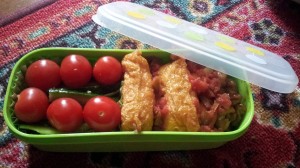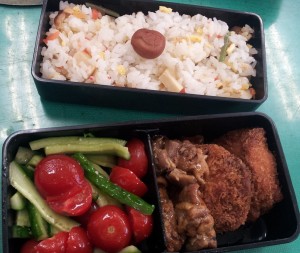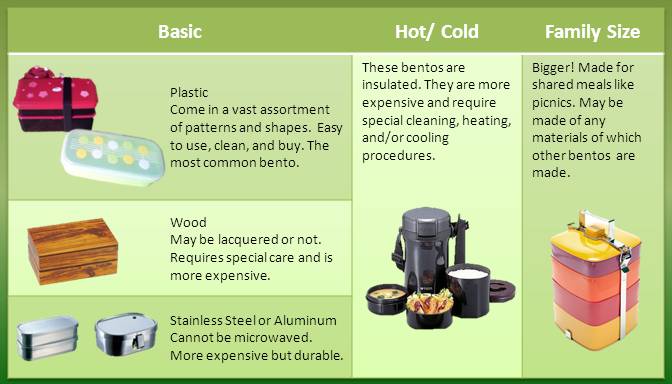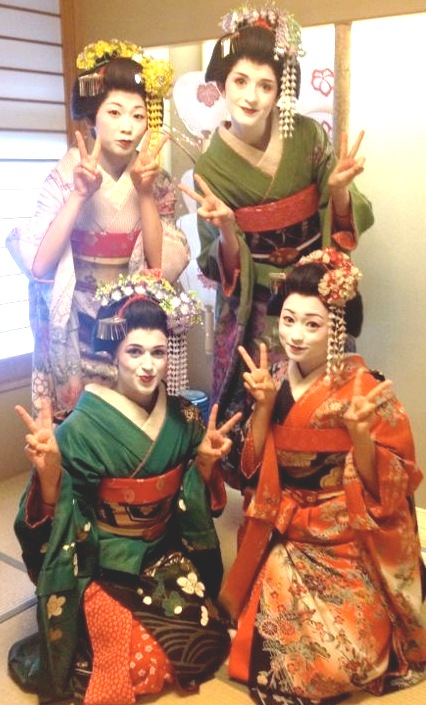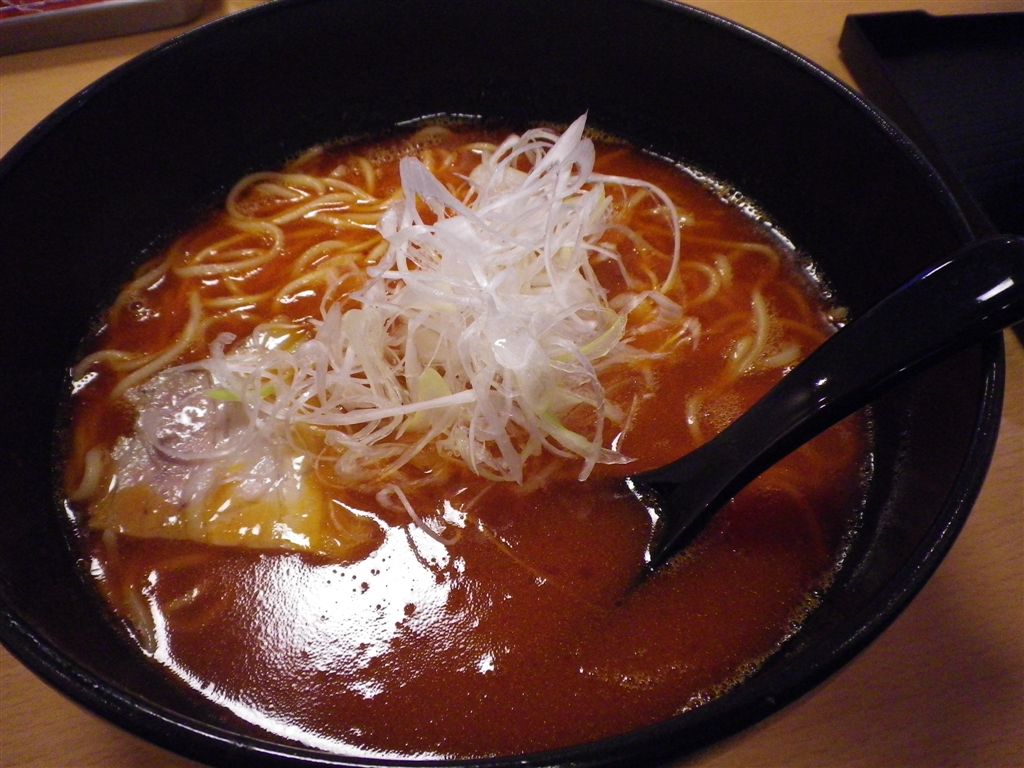The Science of Bento
What is Bento?
A traditional bento is a complete Japanese meal, with all the side dishes, packed lovingly into a small portable box. A bento lunch should fill the box completely, so that the carefully arranged food doesn’t shift during transport, and it should look immensely appealing, so that even the pickiest of eaters will devour it.
The typical way to construct a bento is to fill half the box with rice, a quarter with protein, and fill the rest with vegetable or fruit dishes. Of course, there are as many variations on this theme as there are bento eaters. Dieting bentoists often invert the proportions with half the bento consisting of vegetables and only a quarter rice. The fiber conscious substitute whole grains, brown rice, or options like quinoa. Bento lends itself to a multitude of varieties and accommodations. Today’s bento chefs even fill their boxes with things like tortillas, lasagne, and fried green tomatoes. The modern bento can take on any flavour, cuisine, or style, as long as it’s a whole meal packed together into a box or box-like container.
The Science:
Each bento box is crafted for beauty and utility. They are measured in milliliters, and if packed properly, this measurement should roughly correlate to the number of calories in the meal. For example, this lovely green box holds 510 milliliters. Since I know that inarizushi, my choice of carbohydrate this time, is high in calories, I’ve filled it using the diet proportions.
Carbohydrate: Inarizushi (rice in fried tofu pockets) – 248 calories
Protein: salsa chicken (some of the chicken is under the rice pockets) – 167 Cal
Vegetable: cucumber tomato salad with Italian dressing – 94 Cal
Total:Â 509 calories
It may not look very big, but the calories match the capacity almost exactly. This is a decent lunch if, like me, you eat snacks through the day. Other bento boxes come in 700 and 800 milliliter capacities that are better suited to a diet of three meals a day without snacks. Even though I didn’t know exactly how many calories this meal was when I packed it (I had to look it up later), I knew it would be about 500 because it fit in my box and the proportions matched a quarter carb to a quarter protein to half vegetables. This easy portion control is one of the attractions of bento.
If I opt for a lighter carb, like this mixed rice bento, the traditional proportions of half carb, quarter protein, and quarter vegetable also produce correlating numbers:
Carbohydrate: mixed rice with tofu, carrot, and seaweed – 284 Cal
Umeboshi (the pickle in the middle of the rice) – 5 Cal
Protein: leftover yakitori(99 Cal), and cheesy fish croquettes (162 Cal) – 261 Cal
Vegetable: Tomato cucumber salad – 94 Cal
This box holds 640ml between the two tiers. Even with the deep fried fish, the calories total at 644. It’s a delicious match!
Another cool science fact concerns the use of pickles. Pickles feature heavily in Japanese meals, and it’s not just because they taste good. Bentos are generally made early in the morning and kept at room temperature until lunchtime. The vinegar in pickles can keep the entire bento fresh until it’s time to eat it. Even the classic bento passed down from ages past features a bed of beautiful white rice with a single pickled plum resting on top. This pickled plum, or umeboshi, served not only as a delicious counterpoint to the plain rice, but also to keep a farmer’s lunch safe while he worked the long hot hours until midday.
The Box
When choosing a box, look for one that fits your diet habits, and your personal aesthetics. Living in Japan brings you a plethora of bento box options. From uber cute to austere, you’re sure to find something that suits you. The number and variety of boxes can be daunting, so here’s a breakdown:
Â
Most of the boxes you see in everyday use come from the top left category. Plastic models are cheap and versatile. Be prepared to want more than one as they come in more cool designs than you can shake a chopstick at.
Some sets come with cutlery, drink thermos, or a cloth wrapper in matching patterns. However, it’s just as easy to accessorize with the chopsticks and water bottles that you already own.
Some sets are two or even three-tiered for those who like to separate their food extensively. This is also nice if you want to heat part of your meal in the office microwave, but not all of it.
You can find bento boxes almost anywhere in Japan. From the nearest hundred yen shop, to specialized bento only stores, you’re sure to find something in your price range.
Tune in next month for the Art of Bento, where we’ll delve into the tools and techniques for filling these beautiful boxes.
Dana Warren

